MARTIALFORCE.COM
PRESENTS
AN INTERVIEW WITH
MASTER MARCUS SALGADO
APRIL / 2011
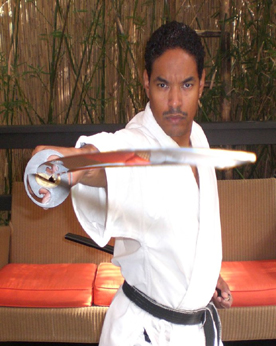
My name is Eddie Morales and welcome to Martialforce.com Online Martial Arts Magazine. I want to introduce Martialforce.com readers to Master Marcus Salgado. Salgado is originally from the East Coast where he studied for many years with a handful of notable instructors. I first met Master Salgado through a mutual friend of ours by the name of Michael Jai White. Michael and I would train on occasion at Tujunga Park located in Los Angeles California. I recall we had just arrived at the park and Michael told me a friend would be joining us. When Salgado arrived I immediately recognized him from his double nunchaku kata performance that I had seen him perform at a tournament years prior in New York City. When the training session began I could see that Salgado had more than just nunchaku technique. His kicks and punches were delivered with accuracy and form that could only be gained through years of training and experience. Master Salgado is a very Knowledgeable Martial Artist and continues to practice with sincere dedication. I hope you enjoy this interview as I attempt to show his life, art and dedicated commitment.
Interview by Eddie Morales
Martailforce.com
Online Magazine
Martialforce.com: Where are you originally from and where did you grow up?
MARCUS SALGADO: I was born at Mount Sinai Hospital in East Harlem New York City and raised in Harlem and the South Bronx.
Martialforce.com: What is your current occupation?
MARCUS SALGADO: My current occupation is filmmaking. For the past 20 years I have worked as an actor, stunt performer, fight choreographer, and stunt coordinator.
Martialforce.com: What motivated you to begin Martial Arts and who was your instructor / s?
MARCUS SALGADO: My uncle was the first person to expose and inspire me to begin training in the martial arts. He took me to a workout at his ju-jitsu dojo on Gun Hill Road in the Bronx in the late 1960's. Black Belt Magazine and Bruce Lee in The Green Hornet television series also had a great influence on me.
By 1973, I would start training with my first instructor Grandmaster Lamarr Thornton in Shotokan Karate. Along with Shotokan, Grandmaster Thornton also trained us in Goju-Ryu Karate and Sanuces Ryu Ju-Jitsu. I would also go on to study with Grandmaster Abdul Musawwir in Shotokan Karate and Yang Style Tai-Chi Chaun, and with Grandmaster Talib Muhammed in Vee Anis Ju-Jitsu. Other instructors who helped in my early development are Grandmaster Jake Gonzalez, Master Ronald Perkins,Master Philip Mc Crae, Master Joe Moore, and Masters Steven and Chink Valencia.
Martialforce.com: Can you tell our readers what a typical day of training was like back when you were competing in karate tournaments?
MARCUS SALGADO: A typical day of training when I was competing in tournaments was the normal 2 hours a day (at least), 3 to 5 times a week. Class would begin with a warm-up and stretching, then kicking and punching drills, matt work (rolls/falls), self-defense techniques, kata (empty hands and weapons), and conclude in sparring and meditation. As we would approach the competition date, we would emphasize more sparring, bag work, calisthenics with medicine ball, endurance, and rest over the weekend.
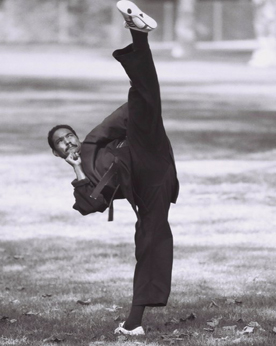
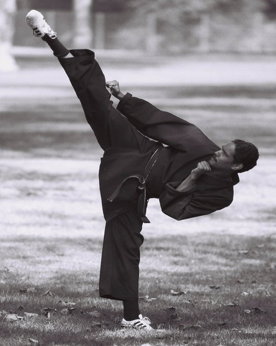
Martialforce.com: Do you believe the practice of kata is useful and if yes or no, why?
MARCUS SALGADO: Yes, Kata training is important in laying the foundation for all the basic movements and techniques found in a given martial arts system. It is essentially the alphabets of a system. However, Kata does not automatically apply to Jiyu-Kumite (free style fighting), or sparring unless you understand how to take classical movements for self-defense and apply them to free sparring. That's why, one can be very good at Kata, but have poor sparring ability. Ultimately, to be good at Kata, you have to practice Kata, and the same holds true for Kumite. If you want to be good at sparring or fighting, you have to fight.
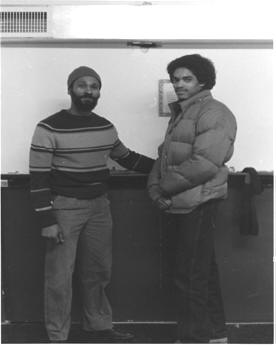
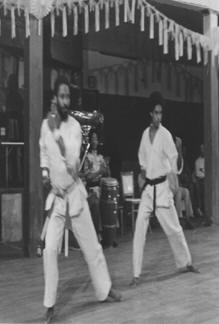
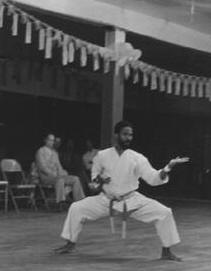
Grandmaster Abdul Musawwir
Martialforce.com: When you competed in weapons Kata at tournaments, you chose the nunchaku as your weapon. My question is, do you practice any other weapons and why did you choose the nunchaku?
MARCUS SALGADO: The other weapons that I practice are Bo staff, Sai, Kama, Tonfa, Jo Stick, Kali stick and knife, Walking stick and cane, Naginata, Spear, Katana, Chinese Broad Sword, Tai-chi sword and Chinese Kwandao. The reason I picked the Nunchaku for competition is because it was the first weapon I learned. Also, I noticed that not that many competitors used the Nunchaku. not to mention, very few competitors used two Nunchaku's at the same time in a non-static way. What I mean by non-static is the competitor does not stand still or in one location while using the weapon, they are able to move as if they are really doing battle with an opponent or several opponents. What also attracted me to the Nunchaku is that it is a very exciting weapon visually. Visually, it has a windmill effect for the viewer!
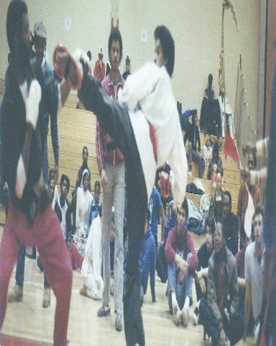
SALGADO ON RIGHT FIGHTING MASTER SABU LEWIS
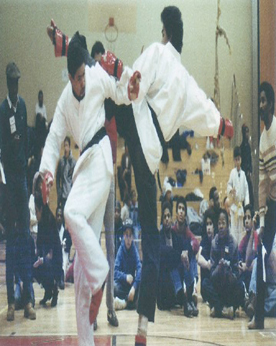
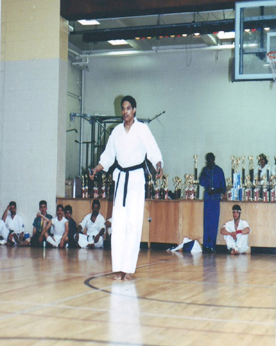
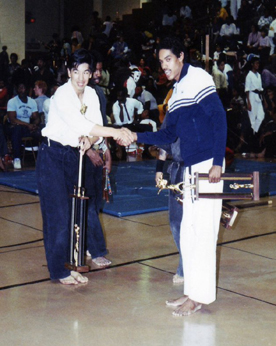
GEORGE CHUNG ON LEFT WITH SALGADO
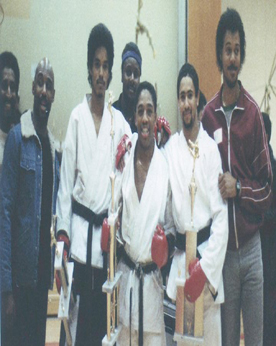
Martialforce.com: Do you feel that Martial Arts played an important role with who you are today?
MARCUS SALGADO: Absolutely, Martial Arts definitely played an important role in who I am today. Growing up in the South Bronx and Harlem during the 1970's was very challenging to say the least. I was an at risk youth during my teenage years and the Martial Arts was a crucial element to my survival! Going to a dojo 5 days a week for 2 hours a day, along with school was huge! It meant that I had fewer hours to spend on the streets where trouble would find you! Through these many hours of practice I would learn not only how to defend myself, but I would also learn many principals and skills that would be useful in my life for years to come. Martial Arts for me was my 'rites of passage' from a young boy to manhood!
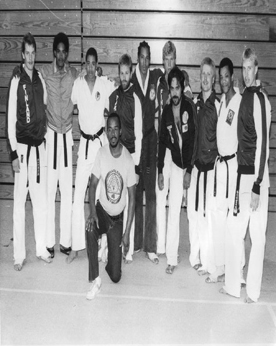
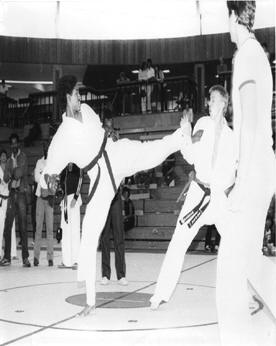
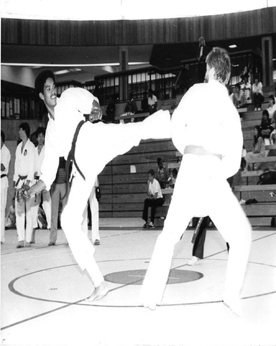
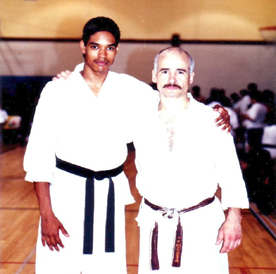
SALGADO WITH EAST COAST GREAT LOUIS DELGADO
Martialforce.com: What are your thoughts on cross training in regards to other styles of Martial Arts?
MARCUS SALGADO: Cross training came very naturally to me during my martial arts development. When Grandmaster Lamarr Thornton was teaching at the Webster Ave. P.A.L. in the Bronx, our dojo was in a boxing gym with heavy bags, speed bags, double end bags, and a ring. Along with the 3 Japanese styles of martial arts we were learning, we also practiced boxing and kickboxing at the gym. Grandmaster Thornton also had an open door policy. If you were someone that Grandmaster respected, then you were invited to come and train at our dojo. The list of martial artist that came through our dojo doors read like a 'who's who' of martial arts. Martial artist from all styles came to our dojo. We were cross training over 30 years ago!
Martialforce.com: If you think back to your younger days, who do you feel was the biggest influence in Karate or life in general and why?
MARCUS SALGADO: My mother, the late Alcina Salgado definitely had the greatest impact on my life in general. Everything that I am and wish to be is because of my mothers love, guidance, and nurturing. However, the greatest influence in my martial arts journey has been both Grandmaster Lamarr Thornton and Grandmaster Abdul Musawwir. I consider both Grandmasters to be my spiritual fathers. To this day I am very close to them and still seek them out for advise, training, and spiritual counsel.
Martialforce.com: When and with who did you start training in Tai Chi and was it a natural progression of your Martial Arts practice or did you have a specific reason?
MARCUS SALGADO: I started training in Tai-Chi Chuan with Grandmaster Abdul Musawwir in the early 1980's. One of his students, Master Phillip Mc Crae urged me to train with him. He said if I wanted to take my skills to the next level, that I should seek out Grandmaster Musawwir. Originally, I wanted to train with the Grandmaster in Shotokan Karate, but he insisted that he only taught Tai Chi. After a year or so, Grandmaster Musawwir began teaching me various techniques and concepts from several systems. However, after a while he began to focus more on Chinese internal styles and systems. I am probably the last student of his to train and demonstrate with him in a Karate gi in over 20 years!

Martialforce.com: It's difficult for a person wanting to learn Martial Arts to pick a good instructor. Can you give us your definition of a good Martial Arts Instructor?
MARCUS SALGADO: First of all, lets understand that teaching is a talent. Just because you were a great competitor or practitioner does not make you a great teacher or instructor. There are many skills that go into making an effective teacher. Communication has got to be at the top of that list. How you communicate and motivate your students is very important.
For example, the way you motivate and talk to children is different than how you would communicate with adults. Both students require a different approach and communication style. Often, a good way to determine the ability of a teacher along with their communications skills is to watch and observe the teachers students. Notice how well the students respond to what is being taught and the level of their ability. Students are usually a direct result and reflection of their teacher.
Martialforce.com: On a different note, how did you get involved in the film industry?
MARCUS SALGADO: After attending SUNY Purchase in New York, I got involved with an on campus theatre group and performed in my first play. The play I performed in was called 'Happy Ending' by playwright Douglas Turner Ward. The play would also star a young and talented up and coming actor named Ving Rhames. It was a magical experience! After performing in the play, I felt a certain freedom and weight lifted. Having been a bit shy growing up and afraid of expressing myself before an audience, the experience of being in a play proved to be liberating! After SUNY Purchase, I began to continue honing my skills as an actor through various workshops and performances in NYC. I would work as an actor in NYC during the 1980's. By the 1990's, I transitioned from acting to a fight choreographer and stunt performer when a student of mine named Wesley Snipes’ brought me to Hollywood when his career began to expand into action films. I worked as Mr. Snipes Martial Arts teacher and main Fight Choreographer on his films from 1992-1997. Since then, I have been living and working in Hollywood for the past 20 years as an actor, fight choreographer, stunt coordinator, and filmmaker.
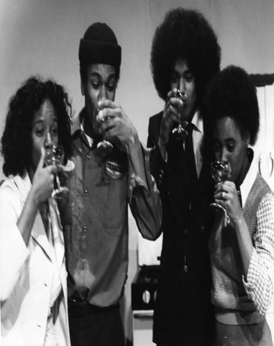
Marcus Salgado with Ving Rhames in SUNY Purchase production of Douglass Turner Ward's play “Happy Ending.”
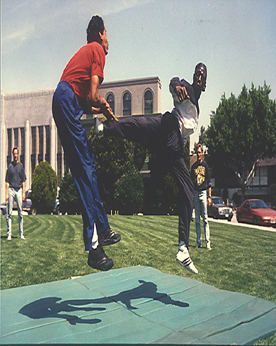
REHEARSING FIGHT SCENE WITH WESLEY SNIPES
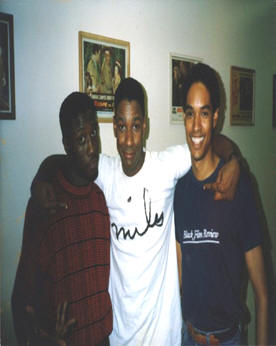
WESLEY SNIPES, DENZEL WASHINGTON AND SALGADO
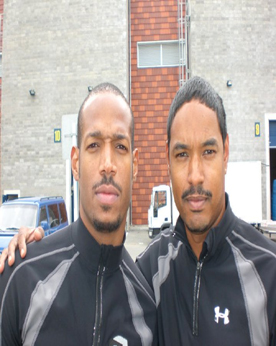
SALGADO AS STUNT DOUBLE FOR WAYANS
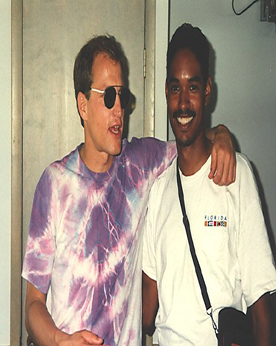
WOODY HARRELSON AND SALGADO
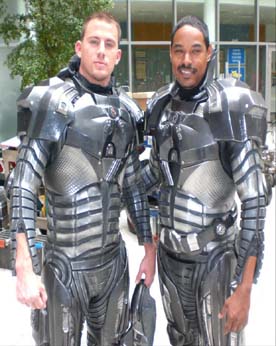
CHANNING TATUM AND SALGADO ON
THE SET OF' G.I. JOE' IN PRAGUE
Martialforce.com: What would you say is your greatest achievement?
MARCUS SALGADO: My greatest achievement and work in progress is my family! It is through my family's love and support that I have achieved much of my successes in life
Martialforce.com: There are many kids that don’t have role models in their life and as a result end up caught up in a negative street life. What would you say to a child that might be reading this in regards to feeling like they don’t fit or haven’t found themselves?
MARCUS SALGADO: Being raised by a single parent most of my life, my mother was ultimately my role model. However, as a youth I did not always understand how important my mother was to my development, because as a male, I missed having a positive male figure in my life. It's not that a single parent can't be a role model and produce great children; it is just that kids, whether they are male or female, need to identify a positive masculine or feminine energy in their life. I found that positive masculine energy in my life through my martial arts teachers, who became my spiritual fathers. I identified with their strength and righteousness and worked hard to emulate them. If a child does not have family to provide them with positive role models, then I would encourage them to find a mentor and learn a craft or something that they are passionate about and drown themselves in that thing. When you have a positive focus in life and something you love to do, many positive things can result from it. Great things can sometimes happen when you’re focused on something, even though you may not know where it will take you. There is a saying, 'when the student is ready, the master will appear'. This refers to the fact that, if you remain positive and focused, the universe will open up to you and provide you with all the things and people who will help you achieve success. No matter what your going through in life, remain strong and believe in yourself and know that everyone has a talent and is capable of greatness!
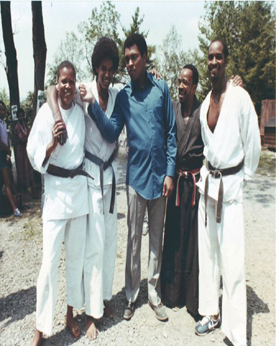
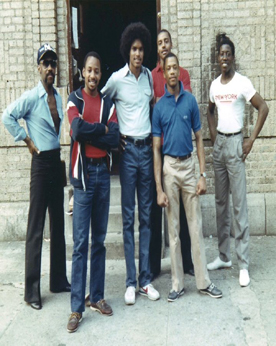

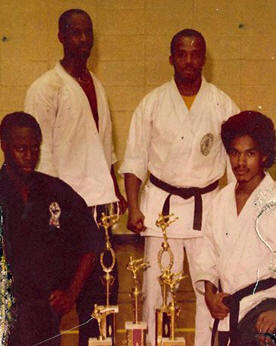
SALGADO KNEELING ON RIGHT
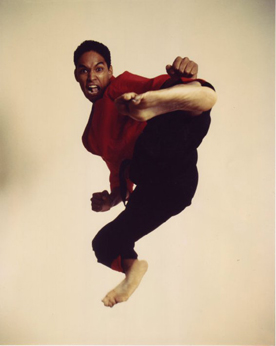
Martialforce.com: Do you have any long or short-term goals in Martial Arts?
MARCUS SALGADO: My current and long-term goal is to continue to grow my Martial Arts and Entertainment Company called Screenfighter.com into an information and resource portal for Martial Artist's and Filmmakers. It is my goal to pass on my knowledge of Martial Arts and Filmmaking to the next generation!
For further information on Master Marcus Salgado, you can email him at marcus@screenfighter.com or go to his website at www.screenfighter.com
Martialforce.com: Thank you for accepting our invitation for this interview And I along with the Martialforce.com staff wish you continued success.
MARCUS SALGADO: Thank you for the opportunity.